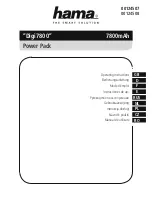
27
NOTES:
- The negative (-) potential of the external voltage (E
1
) represents the
voltage at the (-) output terminal. The negative (-) potential of the
internal control voltage also represents the voltage at the (-) output
terminal. Therefore, be very careful when grounding the output.
- Ripples and noises contained in the external voltage are amplified
and output. Thus, use external voltage with less ripples and
noises.
- The input impedance (Z
in
) of E
1
is approximately 10 kΩ.
- Supply E
1
using a two-core shielded cable or stranded (+) and (-)
twist pair wires.
2. Output voltage control using external resistance
*
It is possible to output voltage in proportion to resistance
between 0 to 10 kΩ.
1) Shut off the POWER switch.
2) Set the V ext. R switch on the front panel to the ON position
with the attached screwdriver. Then, connect a cable to the
terminals on the rear panel as shown below.
Relationship between output voltage (E
0
) and external resistance (VR
1
)
E
0
: Output voltage
E
0
≒
×
VR
1
[kΩ]
(
VR
1
≦
10kΩ
)
E
max
: Rated voltage
VR
1
:
External resistance
Front panel switch and control
Terminals on rear panel
V
R1
R2
V ext.R
ON
OFF
ext.cont
Use a shielded cable or twisted pair wires.
VR
1
E
max
10
















































